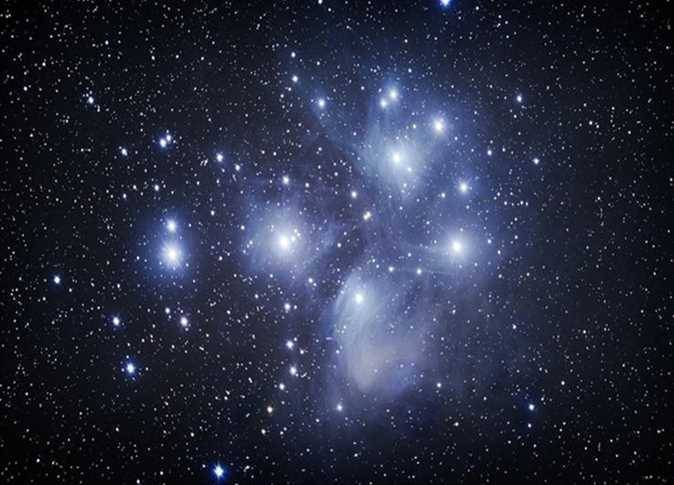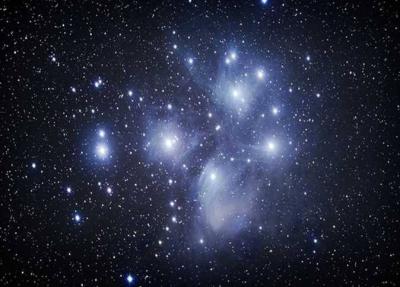The crescent moon will be observed near the Pleiades cluster, also known as the Seven Sisters, before sunrise tomorrow, Tuesday, in the skies of the Arab world. Engineer Majed Abu Zarah, head of the Astronomical Society in Jeddah, stated that the crescent moon and the Pleiades will be visible in the eastern horizon, with the cluster positioned to the upper left of the moon from the observer's perspective. However, the Pleiades will not be visible to the naked eye from within cities due to light pollution obscuring the natural lights in the sky.
He explained that this conjunction can be easily seen using binoculars, noting that the stars of the Pleiades resemble the stars of Ursa Minor but appear hazy. He highlighted that the Pleiades stars adorn the winter nights in the northern hemisphere. In a statement, he said: "According to recent measurements, the Pleiades stars were born from the same cloud of gas and dust about 100 million years ago, compared to the Sun's age of 4.5 billion years. The stars in the Pleiades cluster are interconnected by gravitational interactions and move together through space, with many of the Pleiades stars shining hundreds of times brighter than the Sun." It is noted that the Pleiades cluster will not be clearly visible to the naked eye in cities, but it has been highlighted to illustrate its position relative to the moon only.
### Information about the Pleiades Star
The Pleiades, also called the Seven Sisters or the cluster, is an open star cluster located in the constellation Taurus. It is one of the brightest and most famous open star clusters, observable to the naked eye, with most people able to distinguish six of its stars without optical aid.
In 1579, astronomer Michael Maestlin depicted 11 stars of the Pleiades in their correct positions without the use of a microscope. In 1885, the first photograph of the Pleiades was taken by Galileo Galilei, who was the first to observe the cluster using a microscope. In 2007, the Pleiades was observed in infrared light using the Spitzer Space Telescope, and the images captured helped in discovering some brown dwarfs and planetary disks around the Pleiades stars, later revealing the presence of planets in the cluster.
### Specifications of the Pleiades Star
According to "Astronomy Magazine," the cluster consists of hot blue stars that formed about 100 million years ago from a molecular cloud. The ancient Arabs used to venerate it and were fascinated by its brightness due to its clear visibility.
Some important information about the Pleiades includes:
- The Pleiades cluster occupies an area equivalent to four times the size of the full moon, but its star density is lower than other clusters.
- The Greeks wove myths around it, depicting it as seven sisters.
- It contains a significant number of stars in the sky, exceeding 500 stars.
- Six or seven stars from the cluster can be seen with the naked eye.
### The Pleiades in Arab Culture
- On the map during the movement of the constellation Taurus in the sky, the star Aldebaran – a star within the Taurus constellation – appears as if it follows the Pleiades.
- Arabs named it as such because they venerated it when it appeared and believed that rainfall occurring during its rising or setting brought wealth.
- Arabs divided the areas where the moon traverses into twenty-eight equal distances, naming them the "Mansions of the Moon."
- The Pleiades was the third mansion of the moon, with six of its stars visible to the naked eye. Its stars were close together, resembling a bunch of grapes, so they named it all "the star of Aldebaran," which later became known as the stars of the Pleiades.




